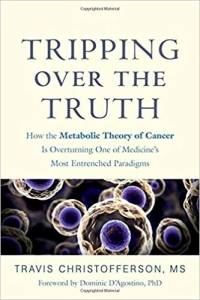The leading physics labs are publishing papers on using frequencies to kill cancer. Here are two from Cal Tech and Cold Springs National Laboratory. These studies are published in the leading physics journals, not the medical journals. It will be decades before the average physician takes advantage of this.
A Dynamical Model of Oncotripsy by Mechanical Cell Fatigue: Selective Cancer Cell Ablation by Low-Intensity Pulsed Ultrasound (LIPUS)
E. F. Schibber, D. R. Mittelstein, M. Gharib, M. G. Shapiro, P. P. Lee, M. Ortiz (Submitted on 27 Nov 2019)
The method of oncotripsy, first proposed in [S. Heyden and M. Ortiz (2016). Oncotripsy: Targeting cancer cells selectively via resonant harmonic excitation. Journal of the Mechanics and Physics of Solids, 92:164-175], exploits aberrations in the material properties and morphology of cancerous cells in order to ablate them selectively by means of tuned low-intensity pulsed ultrasound (LIPUS). We propose a dynamical model of oncotripsy that follows as an application of cell dynamics, statistical mechanical theory of network elasticity and ‘birth-death’ kinetics to describe processes of damage and repair of the cytoskeleton. We also develop a reduced dynamical model that approximates the three-dimensional dynamics of the cell and facilitates parametric studies, including sensitivity analysis and process optimization. We show that the dynamical model predicts—and provides a conceptual basis for understanding—the oncotripsy effect and other trends in the data of [D. R. Mittelstein, J. Ye, E. F. Schibber, A. Roychoudhury, L. T. Martinez, M. H. Fekrazad, M. Ortiz, P. P. Lee, M. G. Shapiro, M. Gharib (2019). Selective Ablation of Cancer Cells with Low Intensity Pulsed Ultrasound. BioRxiv] for cells in suspension, including the dependence of cell-death curves on cell and process parameters.
Selective Ablation of Cancer Cells with Low Intensity Pulsed Ultrasound
David R. Mittelstein, Jian Ye, Erika F. Schibber, Ankita Roychoudhury, Leyre Troyas Martinez, M. Houman Fekrazad, Michael Ortiz, Peter P. Lee, Mikhail G. Shapiro, Morteza Gharib
doi: https://doi.org/10.1101/779124Now published in Applied Physics Letters doi: 10.1063/1.5128627
ABSTRACT
Ultrasound can be focused into deep tissues with millimeter precision to perform non-invasive ablative therapy for diseases such as cancer. In most cases, this ablation uses high intensity ultrasound to deposit non-selective thermal or mechanical energy at the ultrasound focus, damaging both healthy bystander tissue and cancer cells. Here we describe an alternative low intensity pulsed ultrasound approach that leverages the distinct mechanical properties of neoplastic cells to achieve inherent cancer selectivity. We show that when applied at a specific frequency and pulse duration, focused ultrasound selectively disrupts a panel of breast, colon, and leukemia cancer cell models in suspension without significantly damaging healthy immune or red blood cells. Mechanistic experiments reveal that the formation of acoustic standing waves and the emergence of cell-seeded cavitation lead to cytoskeletal disruption, expression of apoptotic markers, and cell death. The inherent selectivity of this low intensity pulsed ultrasound approach offers a potentially safer and thus more broadly applicable alternative to non-selective high intensity ultrasound ablation.


